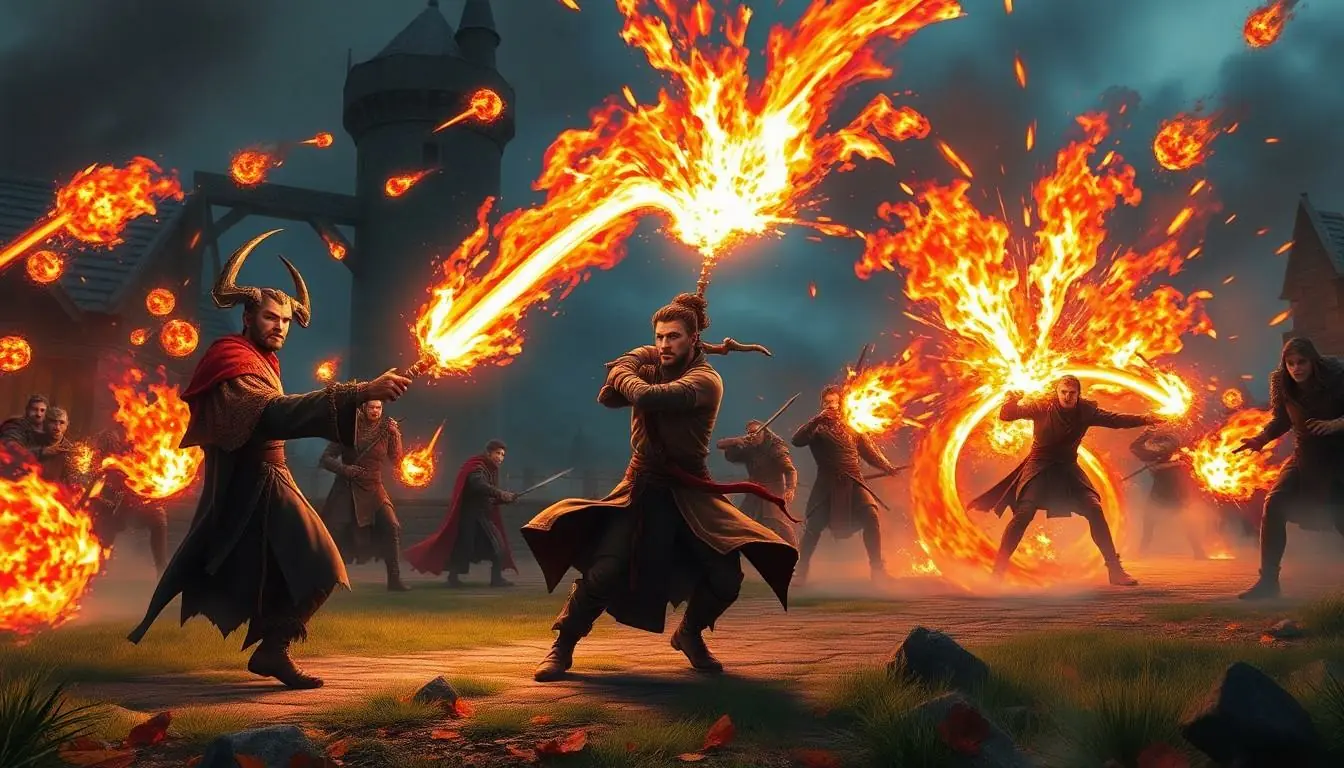In the vast universe of gaming, few terms spark curiosity quite like “AOE.” While it might sound like a secret code or a new trendy dance move, it actually stands for “Area of Effect.” This gaming mechanic has players strategizing and unleashing chaos in ways that would make even the most seasoned generals raise an eyebrow.
Imagine casting a spell that doesn’t just tickle one enemy but sends shockwaves through an entire horde. That’s the magic of AOE! Whether you’re a hardcore gamer or someone who just stumbled upon this term while Googling, understanding AOE can elevate your gameplay and impress your friends. So buckle up; it’s time to dive into the captivating world of AOE and discover why it’s the secret sauce behind countless epic battles.
Table of Contents
ToggleWhat Is AOE Game Meaning?
AOE, meaning Area of Effect, plays a crucial role in many video games. Players utilize AOE abilities to deal damage or apply status effects to multiple targets in a specified area. Understanding AOE mechanics leads to more strategic gameplay, especially in multiplayer settings where coordination often dictates success.
Examples of AOE spells include fireballs and earthquakes that affect all enemies within a defined radius. Characters in games like “League of Legends” and “Dungeons & Dragons” exhibit AOE abilities, making them valuable during battles. Knowing when and where to deploy these abilities can turn the tide of a confrontation.
Game designers incorporate AOE mechanics to enhance tactical depth. Players who master the art of timing and positioning achieve better outcomes. Choosing the right moment to unleash an AOE attack increases the chances of hitting multiple foes, maximizing damage and impact.
Character classes frequently specialize in AOE attacks. Wizards and sorcerers often possess powerful AOE spells, enabling dramatic effects in combat. Conversely, melee fighters might execute area attacks with sweeping strikes to engage multiple enemies.
In different genres, AOE takes various forms. Real-time strategy games and role-playing games feature AOE prominently, creating dynamic and engaging encounters. Players encountering AOE mechanics find themselves in high-stakes situations, emphasizing teamwork and strategy.
Recognizing the significance of AOE contributes to a player’s overall effectiveness. Mastering these aspects can enhance enjoyment and competitiveness in any gaming session.
The Origin of AOE
The term AOE, or Area of Effect, has roots in tabletop role-playing games and evolved with the rise of video games. Spells like fireballs and shockwaves that target multiple enemies first emerged in games like Dungeons & Dragons, where characters utilized unique abilities during combat.
Historical Context
Tabletop RPGs laid the groundwork for AOE mechanics. Early iterations of AOE effects introduced concepts of area-based damage that shaped strategic thinking. Games such as Dungeons & Dragons popularized the idea of hitting multiple targets at once. As video games developed in the 1980s, notable titles like “Gauntlet” incorporated AOE elements, allowing players to interact in larger, dynamic environments.
Popularity Over Time
The popularity of AOE mechanics surged with real-time strategy games. Titles like “Warcraft III” and “StarCraft” showcased how AOE spells could change battle outcomes. In such games, players recognize key strategies that revolve around AOE abilities. Multiplayer games, particularly MOBAs like “League of Legends,” also contributed to the rise of AOE popularity, with numerous heroes designed around these impactful mechanics. Through continuous innovation, AOE remains a staple in gaming, deeply influencing gameplay and strategies across genres.
Different Types of AOE Games
AOE mechanics manifest in various game genres, each offering unique gameplay experiences. Understanding these types can enhance player strategies.
Real-Time Strategy Games
Real-time strategy games prominently feature AOE spells to shape tactical gameplay. Players often rely on units with area attacks to control the battlefield effectively. In “Warcraft III,” for instance, spells like Blizzard can devastate enemy forces in designated zones, turning the tide of battle. Similarly, “StarCraft” incorporates AOE abilities that disrupt enemy movements and protect resources. Players must time these attacks accurately to maximize impact, making real-time strategy games a showcase for AOE’s strategic depth. Mastery of AOE mechanics in this genre directly correlates with success in competitive environments.
Turn-Based Strategy Games
In turn-based strategy games, AOE plays a crucial role in executing calculated moves. Players utilize area effects to eliminate multiple foes or gain strategic advantages on the map. “XCOM 2” serves as an example, allowing players to deploy grenades that affect several enemies at once, forcing opponents to reconsider their positioning. Also, “Fire Emblem” integrates AOE skills into character abilities, granting an edge during player confrontations. Timing and placement become vital elements in these games, where each turn provides new opportunities for strategic deployment of AOE abilities. Success in turn-based strategy hinges on effective use of AOE to influence enemy actions.
AOE Game Mechanics
AOE mechanics introduce dynamic gameplay through strategic area targeting. Players harness these effects to influence multiple foes simultaneously, shaping battles in innovative ways.
Core Gameplay Elements
Core gameplay elements of AOE emphasize strategic area control. Players can cast spells or use abilities affecting multiple targets within designated zones. Various games incorporate AOE differently, ranging from spellcasting in “Dungeons & Dragons” to real-time strategy engagements in “StarCraft.” Classes specializing in AOE, like sorcerers and wizards, enhance their teams’ potential for damage. Timing plays a critical role, as deploying AOE attacks at optimal moments can shift the tide of battle. Players benefit from mastering AOE mechanics, unlocking new options for tactical gameplay.
Strategies for Success
Successful players utilize various strategies to maximize AOE effectiveness. Positioning units strategically around enemies enhances the impact of AOE abilities. Coordinating with teammates creates opportunities for devastating combinations, especially in team-based games like “League of Legends.” Understanding enemy movements allows players to predict encounters and set traps using AOE techniques. Additionally, practicing timing ensures AOE attacks land during crucial moments, amplifying damage potential. Engaging with AOE mechanics unlocks strategic depth that significantly influences overall gameplay outcomes.
Conclusion
Mastering AOE mechanics is essential for any gamer looking to elevate their gameplay. Understanding how to effectively utilize area of effect abilities can turn the tide in battles and enhance strategic planning. Players who grasp the nuances of AOE will find themselves not only improving their own skills but also contributing to their team’s success.
As AOE continues to evolve across different gaming genres, its impact on gameplay remains undeniable. Whether in real-time strategy, role-playing games, or competitive MOBAs, AOE mechanics provide depth and excitement that keeps players engaged. Embracing these elements unlocks new possibilities for tactical maneuvers and memorable gaming experiences.






